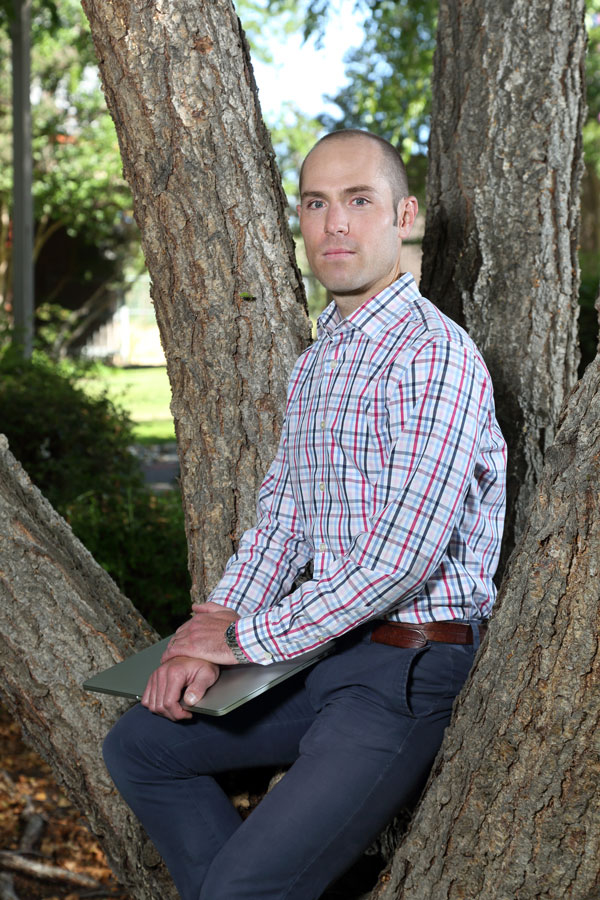National Academy of Engineers selects Brandon Heimer for symposium
Sandia researcher Brandon Heimer has been selected to participate in the National Academy of Engineering’s (NAE) 24th annual U.S. Frontiers of Engineering symposium.
In its announcement, the academy called Brandon one of 84 of the nation’s “top-notch” engineers ages 30 to 45 who are performing exceptional engineering research and technical work in a variety of disciplines. The participants, from industry, academia, and government, were nominated by fellow engineers or organizations.
The symposium will be hosted Sept. 5-7 by Massachusetts Institute of Technology Lincoln Laboratory. The event will cover cutting-edge developments in four areas: quantum computing, technology for humanitarian assistance and disaster relief, resilient and reliable infrastructure and theranostics, or targeted therapy based on specific diagnostic tests.
“It’s a great honor to be recognized by my engineering mentors in the National Academy of Engineering and to stand alongside such accomplished peers,” Brandon said. “I’ve had

the privilege of working with four NAE members during my undergraduate and graduate education. They inspired me to make an impact on the world with my research, and I intend to use this opportunity as encouragement to continue that pursuit.”
Brandon said he intends to take part in all four areas of the forum. He is using his expertise in bioengineering and microfluidics from his thesis research to develop a diagnostic to detect epigenetic changes to DNA. At Sandia, he has been an internal advisory board member for the NanoCRISPR Grand Challenge Laboratory Directed Research and Development project that seeks to deliver CRISPR — the technique that makes it possible to alter DNA within cells — as a therapy to combat infectious disease.
“I intend to draw upon both these experiences to contribute to the discussion of theranostics and bring what I learn back to Sandia and to my colleagues for inspiring research and development,” he said. “This research will help provide physicians with tools to diagnose and treat disease potentially for warfighters serving in areas at high risk for infectious disease.”
One of Brandon’s earliest projects at Sandia involved risk analysis of critical infrastructure for the Federal Emergency Management Agency’s National Hurricane Program. He said the project lies at the intersection of the critical infrastructure and disaster preparedness symposium themes.
Brandon said he intends to learn more about quantum computing at the symposium.
“Quantum computing offers huge potential but also creates potential threats for national security,” he said. Brandon is a senior member of the technical staff in research and academic programs.
Brandon received his bachelor’s in chemical engineering from the University of Texas at Austin and a doctorate from MIT, where he also studied technological innovation, entrepreneurship and strategic management at the Sloan School of Management. His thesis researched protein engineering for biosensing on a microfluidic platform.
When Brandon is not spending time in his lab, he enjoys racing triathlons and SCUBA diving.